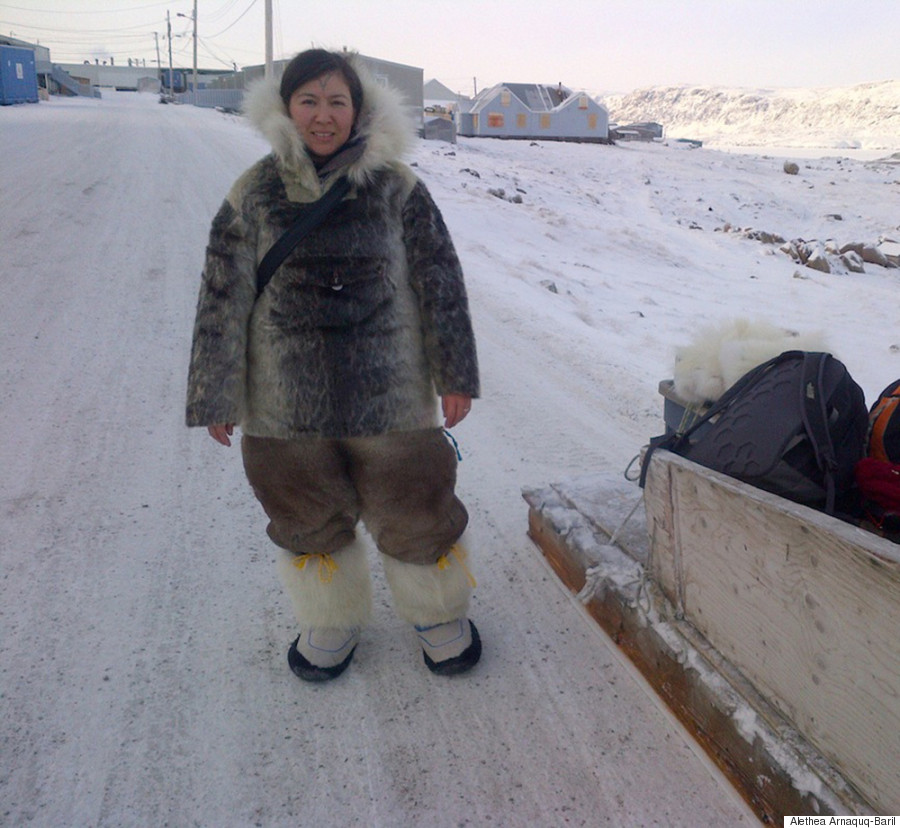Harvesting Seals in Canada
"They're still picturing little Eskimos in igloos with no need for money."
"It [plummeting Arctic seal hunting revenues] was our Great Depression."
"When I see sealskin, I see an ethical and sustainable economy that feeds people."
"I wanted to make this film [Angry Inuk] because it bothered me when I saw animal welfare groups portray seal hunting as an evil and greedy thing."
"When organizations spend hundreds of millions of dollars conveying a certain message then you can't expect the average Joe to know otherwise. You're just going to have way more people believe that message over the voice of the Inuit, a people you very rarely hear from."
"They know damn well what they're doing [the leadership of organizations that campaign against the seal hunt and use it for fundraising]."
"They've been confronted in the past by Inuit, they've been shown the numbers. And they just keep doing what they're doing with full knowledge of the kind of devastation they've been causing in the Arctic."
"I think they've been duping their own low-level staff and the public that donates to them for a very long time. I think it's just a matter of time before people see that."
Alethea Arnaquq-Baril, Inuit filmmaker
 |
| Alethea Arnaquq-Baril on sea ice (Photo: Qajaaq Ellsworth) |
Whether deliberately obtuse and simply looking for a cause that will fit their mission, or setting out with malice aforethought for reasons known only to the dedicated campaigners for animal welfare at the International Fund for Animal Welfare, to make an impact and in so doing boost their reputations they succeeded in destroying a lifestyle and a living for Canada's Inuit dependent on their sustainable seal hunt for food and clothing and international sales; the death knell coming when the European Union sanctimoniously shut off all trade in sealskin products.
When it was brought to the attention of the EU that Northern indigenous populations in Canada and Norway were deleteriously affected, the EU graciously exempted Inuit from bans on the sale of seal pelts and boycotts of all seal products. The ban was specific to heart-rending white-seal pups. Everyone has seen those atrocious videos and photos of big hulking seal trappers smashing the heads of adorable, helpless little white-coats.
The IFAW set out to shut down the 'commercial' hunt, but was willing to forgive 'subsistence' Inuit hunters' traditional sealing. Inuit never did hunt the products that the EU banned in 1983, but were nonetheless stricken by the ban which heralded a worldwide collapse for seal products. The result, Arctic seal hunting revenues plummeted and the nomadic hunters whose way of life it was were cut off from lifestyle revenues to maintain their independence. Leaving them with no option but to settle into communities where suicide rates rose to alarming numbers.
The hunt was never without criticism and since 1970 seal hunters became more sensitized, resulting from that criticism, to the methods used in the hunt. Nets were abandoned and no longer were hunters permitted to enter breeding areas. Inexperienced amateurs in the hunt were no longer able to hunt, refused licenses. Should an Atlantic Coast sealer plan to go out on the water the crew must first attend mandatory workshops on humane practices. None of which has managed to impress the seal hunt's critics.
 |
| Qajaaq Ellsworth, Alethea Arnaquq-Baril, Joannie Ikkidluak, Isuaqtuq Ikkidluak. (Photo: Qajaaq Ellsworth) |
Activists have a single-minded goal; to ban commercial sealing altogether. The European Union installed a blanket ban on seal products in 2009, in response to proposals offered for a more-regulated hunt. The urban legend that Canada's sealers were engaged in destroying the presence of seals through their predatory harvesting of the animals persisted. Canada's "seal slaughter" is "not sustainable", according to one leaflet emanating from Humane Society International.
Harp seals, the basis of the Atlantic hunt, appear to be in abundance. In 2012 an estimated 7.7-million were present on the Atlantic coast according to Canadian government figures.
The historic lows seen in the Harp seal population in the mid-20th century registered at 1.5-million in 1978, since remarkably recovered to the point where they are as numerous currently as they were one hundred and fifty years ago. On the other hand, those promoting the Harp seal hunt promulgated misconceptions of their own in stating that seals were devouring too many fish and delaying the return of the cod fishery, regarding sealing in that context as a necessary 'cull' to preserve the fisheries.
Harp seals evidently do not, after all, consume much cod, according the Department of Fisheries and Oceans. Which also states that cod stocks are rebounding in lock-step with the recovery of the Harp seal population. On the other hand, it appears that Grey seals could be eating quantities of cod, according to a 2012 study from the Bedford Institute of Oceanography. Grey seals forming a small proportion of the annual seal hunt.
In Newfoundland and Labrador, where communities have been decimated by fishing closures, people of those communities are turning to sealing. Almost all politicians in Canada agree that seal hunting is no different than raising livestock for the table. The cafeteria at Parliament Hill serves seal and last April parliament discussed the creation of National Seal Products Day, where all regional representatives in the House united in support.
 |
| Isuaqtuq Ikkidluak out on the seal ice while seal hunting. (Photo: Alethea Arnaquq-Baril) |
Labels: Ban, Canada, European Union, Inuit, Lifestyle, Sealing

<< Home